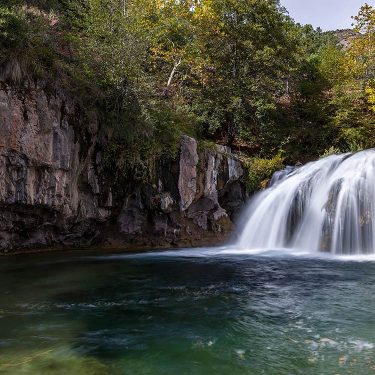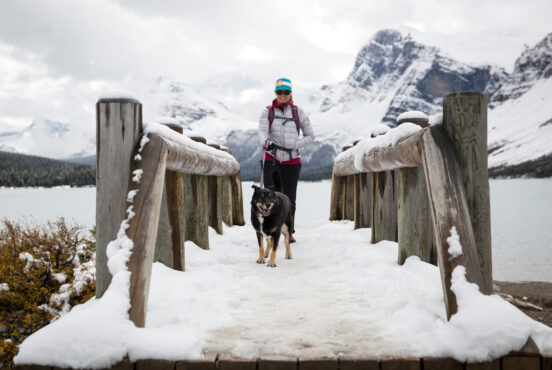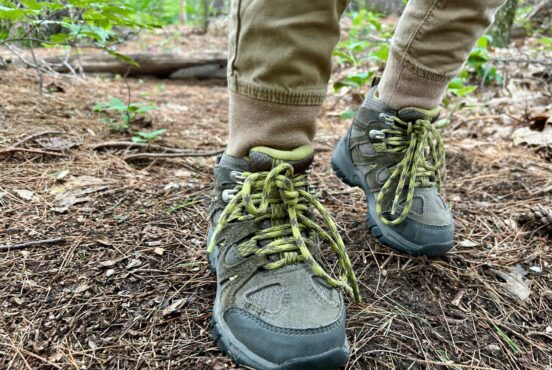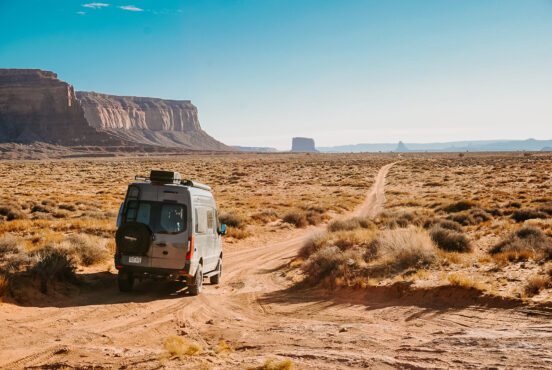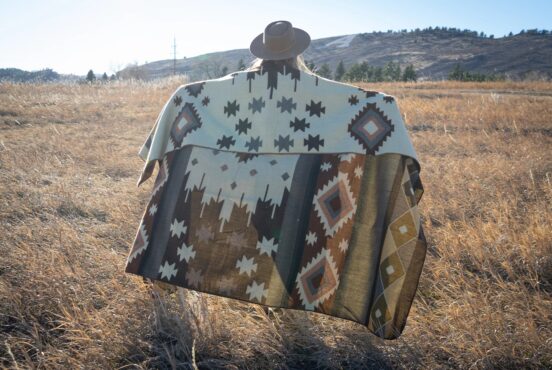The NEMO Hornet 2P tent has been a perennial favorite for decades, but is the upgraded version just as good?
Equal parts lightweight and rugged, the Nemo Hornet 2-person ultralight backpacking tent has long been a favorite of solo adventurers, thru-hikers and minimalist backpackers everywhere. Since 2018, my Hornet two-person tent has logged 185 nights in the backcountry and over 3,000 trail miles, including the 2,600-mile Pacific Crest Trail. It’s been a safe harbor from apocalyptic thunderstorms, violent windstorms, and swarms of bloodthirsty mosquitoes. It’s more than just a piece of gear; it’s my home away from home.
A rising tide of cottage gear companies, buoyed by their devoted fans, have introduced a flood of hand-crafted, ultralight products into a once niche market. Even so, Nemo has stayed competitive by staying on top of the latest backpacking trends, providing outstanding customer service, and creating quality gear built to last. Their latest iteration of the Hornet 2P tent — the Hornet OSMO — prioritizes craftsmanship using an ultralight variation of the brand’s proprietary OSMO™ suite of fabrics.
In this long-term gear review, we’ll assess the Nemo Hornet OSMO™ 2P performance in the field, how it compares to the previous generation of the Hornet 2P tent, and highlight the coolest new additions exclusive to the Hornet OSMO™ 2P.
Buy at Backcountry Buy at REI Buy at Amazon Buy at NEMOSpec Comparison: 2018 Hornet 2P vs. 2024 Hornet OSMO 2P
2018 Hornet 2P: What We Love
After pitching my Nemo Hornet 2P tent nearly 200 times, I’ve gotten a pretty good handle on what works and what doesn’t. While this well-loved tent has already started to show its age, a handful of features have stood the test of time.
Wind Resistance
If your tent isn’t up to snuff, one gnarly gust of wind can break poles, rip fabric, and leave your backcountry abode in tatters. I’ve lived in and hiked throughout Southern California for almost a decade. It’s a place of extremes; summer brings soaring temperatures and thick wildfire smoke, nights in the desert can regularly plunge below freezing, and the Santa Ana Winds that peak in early spring bring damaging hurricane-force winds to the region. That’s why the Nemo Hornet 2P semi-freestanding design uses a single-hubbed aluminum pole that splits into a Y, or wishbone shape. While the Hornet can stand on its own with just a pole, properly staking out the tent is crucial for maintaining stability and shape on windy nights.
The Hornet also features a tapered foot design to reduce wind drag. When pitched correctly with the foot of the Hornet facing into the wind, air currents flow around and over the tent instead of slamming into it. Setting up the Hornet behind natural windbreaks — trees, tall bushes, and rock barriers — also helps. Even without the extra protection of these barriers, the Hornet 2P holds up well in windy conditions both above and below treeline.

Fabric Durability
The Nemo Hornet 2P uses a thin 10-denier Silicone/Polyurethane Nylon Ripstop material for the rainfly and 15-denier Silicone/Polyurethane Nylon Ripstop for the tent floor. While not as light as Dyneema, Nylon Ripstop contains small, reinforcing threads that make the fabric more resistant to rips and punctures.
The silicone and polyurethane coating (Sil/PeU) on the Hornet’s rainfly and floor adds an extra layer of abrasion resistance and water repellency — within reason (I’ll get to this in a bit). While years of friction have thinned out the tent tub in several areas, the floor’s ripstop weave construction has shielded it from punctures and tears. Over the last couple of years, the tent’s ultra-fine no-see-um mesh has also picked up a few small holes. Luckily, the holes haven’t expanded and aren’t big enough for mosquitoes or other small pests to exploit.
2018 Hornet 2P: What Could Be Better
Headroom and Usable Space
Nemo’s choice to advertise the 28-square-foot Hornet as a 2-person tent is like trying to fit two elephants into a clown car: low-key laughable. Typically, 29 square feet of floor space is the magical number for two people: small enough to minimize extra weight but big enough that you’ll actually fit. The Hornet’s narrow and tapered design slashes headroom and usable space within the tent.
But, as a solo backpacker, the Hornet 2P is spacious enough to fit my sleep system and gear. While the inner tent’s slim profile limits how much room you have to move around, the Hornet comes equipped with roomy vestibules on either side to make up for the lack of interior space. I use the vestibules to stash gear I don’t need to sleep with like my water bottles, cookset, and muddy trail runners, which helps to cut down on clutter and maximize the usable space within the tent.

Water Resistance
While thru-hiking the Tahoe Rim Trail in 2023, an unseasonal low-pressure system brought 72 hours of thunderstorms, strong wind, and heavy rain. I don’t exactly enjoy camping in crappy weather, but I also couldn’t afford to spend three days in town riding out the storm. I wasn’t too concerned; my Hornet had weathered its share of downpours without incident. But when I woke up in the middle of the night to find an inch of water inside the tent, my stomach turned over. Even after dragging the Hornet to higher ground, water still found its way into the tent and pooled in the corners, soaking the bottom of my sleeping quilt. The Hornet’s waterlogged rainfly sagged against the inner tent wall, dripping ice-cold water all over my gear, quilt, and face. After extended use, the tent’s waterproofing and seams have noticeably degraded — or maybe it was time for me to re-seal the seams. Whatever it was, packing up a sopping wet tent in the morning is a unique brand of misery. On the plus side, the Hornet’s Nylon Ripstop fabric breathes well and dries lightning-fast. After a long night of rain or a misty morning, a few minutes of direct sunlight is enough to dry out the Hornet.
2024 Hornet OSMO 2P: What We Still Love
Ventilation
A tent without ventilation is like a steam sauna: hot and sweaty. The Nemo Hornet 2P’s superior ventilation system was always one of its biggest selling points, and it’s even better in this latest iteration.
The Hornet OSMO 2P tent takes it up a notch by dedicating even more interior real estate to its airy no-see-um mesh canopy, keeping the inner tent pleasant and comfortable, regardless of the conditions. To see how it held up, I pitched the tent in the afternoon sun and napped with the rainfly on. Even in the blistering high-altitude sun, the inside of the Hornet OSMO™ stayed nice and cool. I also deliberately selected campsites next to creeks and lakes and didn’t experience any unpleasant condensation on the rainfly or the tent’s interior.

Simple Set Up
Yet another “yes and” upgrade that builds on one of the Hornet’s best features: its idiot-proof setup. The Hornet OSMO 2P retains the semi-freestanding design of the original Hornet, using a Y-shaped aluminum pole with a central hub to connect the pole sections. The updated design incorporates a bright, color-coded pole system, eliminating any confusion when pitching the tent in dark or unfavorable conditions. The foot of the tent also comes with bright, color-coded adjustable guyouts with reflective elements, so I don’t have to worry about stubbing my toe or accidentally ripping out a stake in the dark.
Another holdover from the previous Hornet 2P tent is the inclusion of Jake’s Feet attachments at the head of the tent to anchor the rainfly to the tent body. All in all, I was able to set up and stake out the Hornet OSMO™ 2P in less than five minutes — not too shabby.
2024 Hornet OSMO 2P: What’s New?
Proprietary OSMO™ Fabric
The ultralight backpacking category has entered into a kind of material arms race. Fabric manufacturers and cottage companies are pushing the envelope to create lighter, stronger, and more efficient materials and Nemo is no exception. According to the brand, their “high-performance, proprietary OSMO poly-nylon ripstop fabric has 4x better water repellency and 3x less stretch when wet.” The OSMO™ fabric feels slick yet durable, with a grid pattern reminiscent of Dyneema Gridstop.
Even though it didn’t rain on my test trip in the Eastern Sierra, I did my best to simulate rain by using a water bottle to douse the tent from all angles and by pouring water under the tub. The Hornet OSMO passed the test with no leaks or seepage, but only time and continued use will reveal the OSMO™ fabric’s weather-proofing and durability.

Headroom and Usable Space
By far, the most exciting upgrade to the Hornet OSMO 2P was the thoughtful design improvements intended to increase usable space and headroom. It seems Nemo took its user feedback to heart. To expand headroom, they added their proprietary Flybar volumizing pole clip and triangulated struts on the bottom corners for added storage and footroom.
Nemo also improved the Hornet’s interior storage configuration by moving the gear pockets from the tent wall to right above the head. Instead of causing the already-narrow tent body to sag, they’re now usable without a space penalty. Though shallow, the relocated gear pockets comfortably accommodated my small miscellaneous gear including stuff sacks, headlamp, and ditty bag, making the Hornet OSMO 2P tent feel all the more roomy and organized.
How Does the Hornet OSMO 2P Compare with Other Nemo Backpacking Tents?
How does the Hornet OSMO stack up against NEMO’s other backpacking tents? We compiled a helpful comparison chart below.
Nemo Hornet 2P: Final Thoughts
I’ve formed a deep emotional attachment to my vintage Nemo Hornet 2P tent, and that’s probably a testament to its incredible quality and longevity. Whatever tent you choose to invest in will be your base camp and sanctuary in the backcountry. The decision is not worth losing sleep over, but it is an important one to make in the context of your outdoor experience.
In my testing, I approached the Nemo Hornet OSMO 2P with a healthy dose of skepticism. I’m happy to report my fears were unfounded. The Nemo Hornet OSMO 2P is a workhorse that’s experienced a glow-up in all of the places that count while comfortably defending its title as the lightest and most economical semi-freestanding tent on the market. Regardless of whether you’re an experienced thru hiker or beginner backpacker, the Nemo Hornet 2P will work for you.
Seen in: Backpacking Gear, Camping Gear, Gear, Hiking Gear

